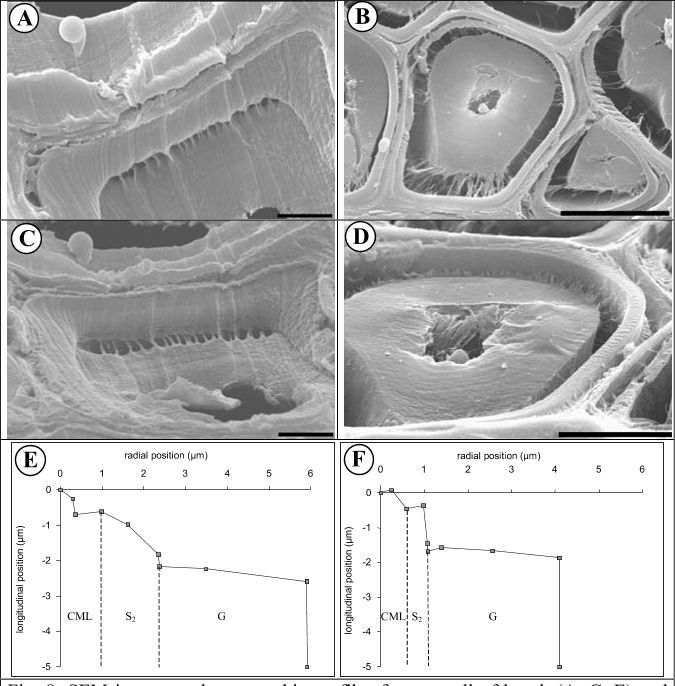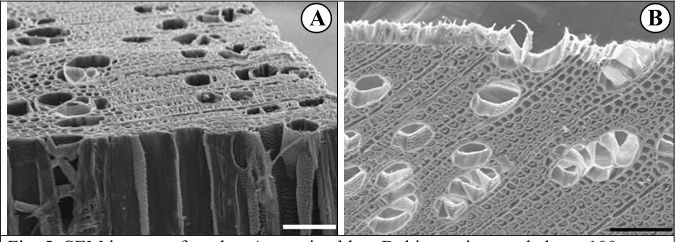




Did you find this useful? Give us your feedback













197 citations
...Further, in atomic force microscopy analyses of cut surfaces of tension wood (kept under water to avoid drying effects) Clair and Thibault (2001) observed pronounced longitudinal shrinkage of the G-layer relative to S-layers, corresponding to a 4.7% strain, which is much greater than the recorded…...
[...]
196 citations
...In previous research, the structure of the G-layer has been described as possessing gel-like characteristics: large shrinkage (Clair and Thibaut, 2001; Fang et al., 2007) and high rigidification during drying (Clair et al....
[...]
...In previous research, the structure of the G-layer has been described as possessing gel-like characteristics: large shrinkage (Clair and Thibaut, 2001; Fang et al., 2007) and high rigidification during drying (Clair et al., 2003)....
[...]
132 citations
118 citations
100 citations
...It is interesting to note that similar shrinkage of the gelatinous layer of fibers from tension wood, in which the lignin content is very low, also occurs in the same conditions of dehydration (Clair & Thibaut, 2001; Fig....
[...]
[...]
817 citations
...However, two cases exist when longitudinal shrinkage starts to be more important: in reaction wood (tension wood of angiosperms and compression wood of gymnosperms) and juvenile wood (Skaar 1988)....
[...]
...3 % in longitudinal direction, 3 % to 6 % in radial direction and from 6 % to 12 % in tangential one (Skaar 1988)....
[...]
...Between green condition and ovendry condition, shrinkage ranges from 0.05 % to 0.3 % in longitudinal direction, 3 % to 6 % in radial direction and from 6 % to 12 % in tangential one (Skaar 1988)....
[...]
156 citations
148 citations
98 citations
...…other components properties (cellulose, hemicellulose and lignin), changes in matrix behaviour during drying and introducing the different cell wall layers have been proposed to refine this first theory (Barrett et al. 1972; Cave 1972b, 1978; Sassus 1998; Gril et al. 1999; Yamamoto 1999)....
[...]
...Later, other models integrating other components properties (cellulose, hemicellulose and lignin), changes in matrix behaviour during drying and introducing the different cell wall layers have been proposed to refine this first theory (Barrett et al. 1972; Cave 1972b, 1978; Sassus 1998; Gril et al. 1999; Yamamoto 1999)....
[...]
84 citations